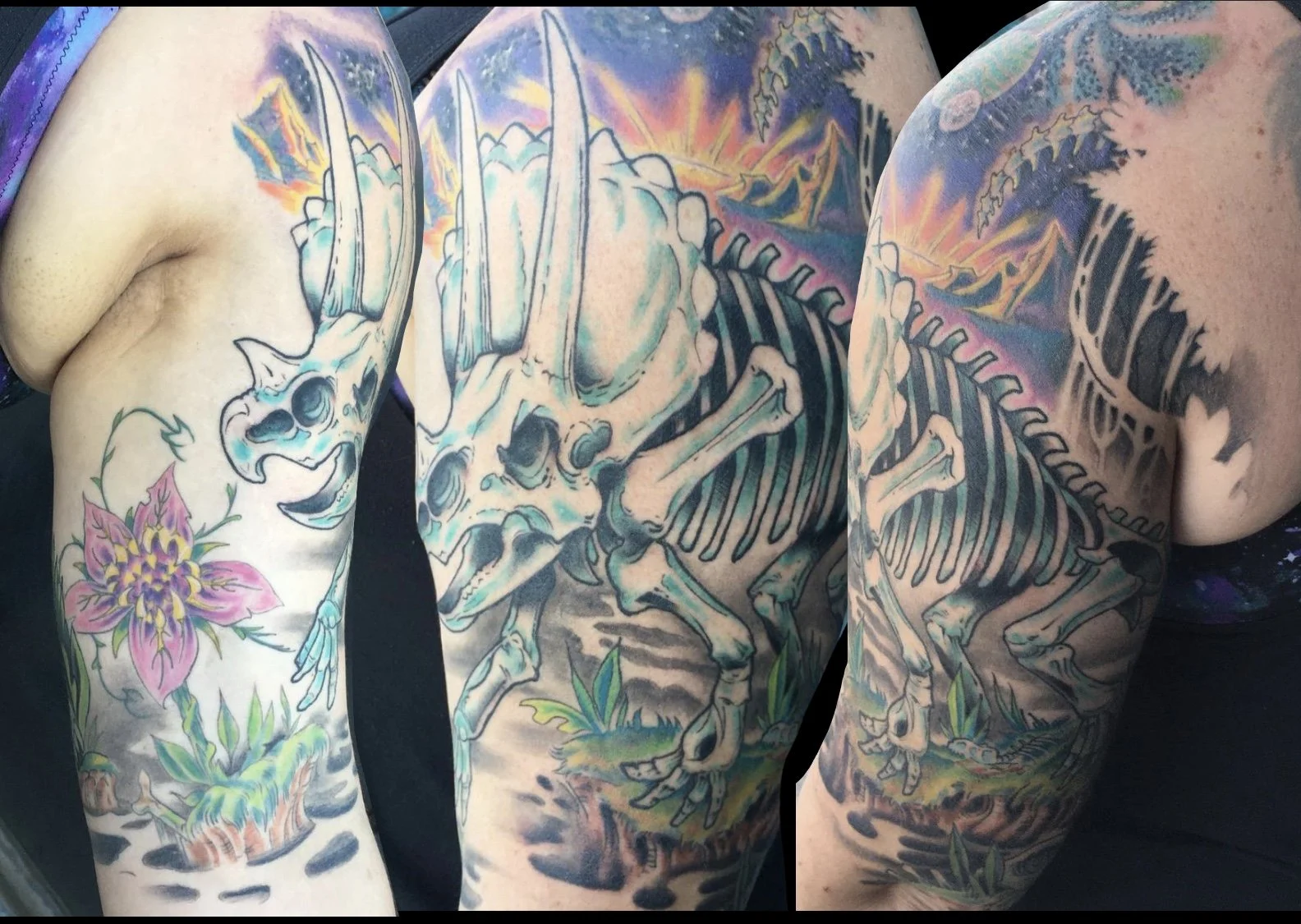Why Black Ink Is So Important in Tattoos
When it comes to tattooing, black ink is the foundation of the art form. From crisp outlines to rich shading, black is more than just a color—it's the structural backbone that brings tattoos to life and keeps them looking sharp for decades. Whether you're getting a minimalist line tattoo or a large, complex piece, black ink plays a critical role in ensuring your design remains bold, legible, and timeless.
One of the biggest reasons black ink is essential is its lasting power. Unlike some pigments that fade over time or shift in tone, black ink holds up incredibly well on all skin tones. It heals dark, ages gracefully, and creates high contrast, which is key for visibility.
Black is also versatile—it’s used for outlines, shading, dot work, and even full pieces in styles like blackwork or tribal tattoos. It provides the depth and definition that makes other colors pop and gives structure to even the most detailed designs. In the world of tattoos, black ink isn’t just a choice—it’s the standard, the anchor, and the most trusted tool in a tattoo artist’s kit.
Tattoos are a timeless form of art and self-expression, and one element that plays a fundamental role in tattooing is the use of black ink. Black ink serves as the backbone of most tattoos, providing depth, contrast, and essential details. In this blog post, we'll explore the significance of black ink in tattoos and why it's considered a crucial element in the world of body art.
CONTRAST AND DEFINITION
Black ink is the key to creating contrast in tattoos. It provides a sharp contrast against the skin, allowing the design to stand out with clarity and definition. Without black ink, tattoos could appear washed out and lack the visual impact they're known for.
SHADING AND DEPTH
Tattoo artists use varying shades of black ink to create depth and dimension in their designs. Through techniques like stippling, hatching, and shading, black ink adds three-dimensionality to tattoos, making them appear more lifelike and dynamic.
HIGHLIGHTING AND DETAIL
Black ink is also essential for highlighting and detailing in tattoos. It can be used to accentuate features, add intricate patterns, or emphasize specific elements within the design. These details contribute to the overall beauty and complexity of the tattoo.
BOLD OUTLINES
Bold black outlines are a hallmark of many tattoo styles, such as traditional and tribal. These outlines help define the boundaries of the tattoo and give it a bold, timeless appearance. They also prevent the design from blurring or fading over time.
COVER UP TATTOOS
Black ink is often used in cover-up tattoos to conceal or transform existing tattoos. Its opacity allows for effective coverage of old designs while enabling the creation of new, vibrant artwork.
VERSATILITY
Black ink is versatile and complements various tattoo styles, from intricate and detailed pieces to bold, minimalist designs. Whether it's used for realism or abstract art, black ink adapts to the artist's vision.
SYMBOLISM
Black ink can carry its own symbolism. It's often associated with strength, resilience, and a sense of mystery, making it a popular choice for tattoos that convey these qualities.
TIME-TESTED TRADITION
Throughout the history of tattooing, black ink has been a constant. It's a time-tested tradition that has stood the test of time, maintaining its popularity and significance in contemporary tattoo culture.
Black ink is the lifeblood of tattoos, providing the structure, contrast, and artistic versatility that make tattoos unique and visually captivating. Whether it's used for bold outlines, intricate shading, or subtle details, black ink is the essential element that elevates a tattoo from a mere design to a work of art. Its importance in tattooing is undeniable, and it continues to play a central role in the world of body art, celebrating the power of self-expression and creativity.
















